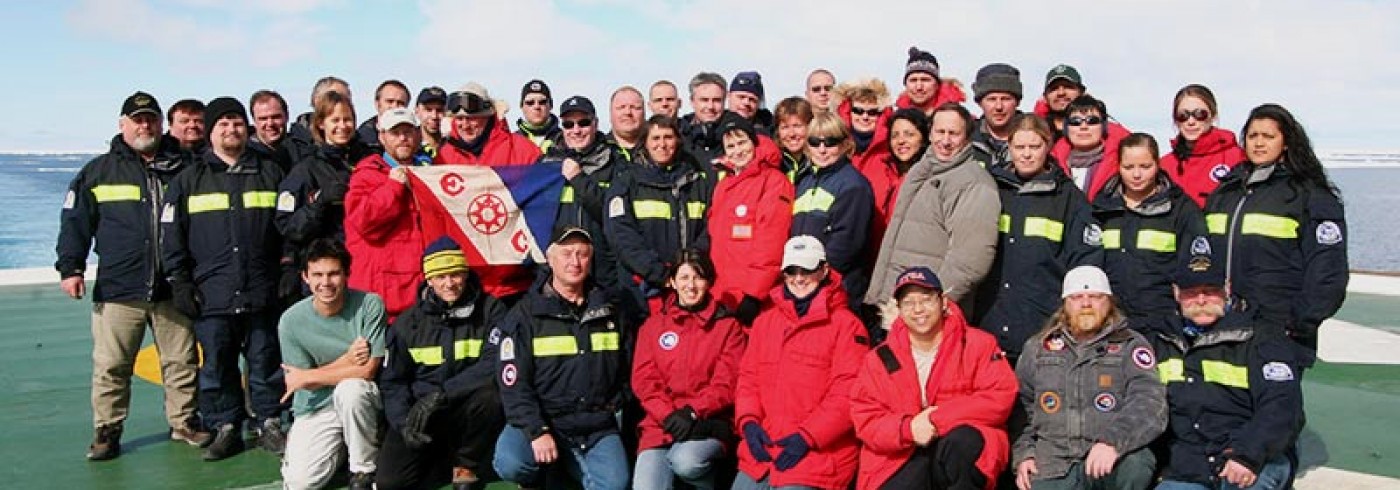Persistent organic pollutants in remote areas: Pesticide residues in the Southern Ocean
12 December 2006 - 27 December 2006
The crew, science team, educator, and journalist participants of SWEDARP Oden Southern Ocean Expedition 2006/07
(with Explorers Club Flag No. 84). Photo: Brent Stewart.
The aim of this study was to collect samples of organic compound pollutants along the transit of the Oden through relatively unvisited areas where anthropogenic impact is presumed to be minor, to help understand how these pollutants may be transported from warm to cold areas. There are few data existing on persistent organic pollutants (POPs) in seawater from the Southern Ocean. In contrast to the Arctic, data from the Antarctic is too sparse to allow temporal analyses. Comparative data from both areas are needed to develop and check models of the global distribution of these pollutants. There has been only one other campaign in West Antarctica to sample for these pollutants, in the Australian sector in 1989–1990. Considering the latest sampling on the African side on these latitudes, we would expect 10–50 pg/l of hexachlorohexanes (HCHs) in the stations sampled in this track, before the convergence point, between 77°21’ W longitude and 61°19’S latitude through, perhaps, 170°W longitude and 75°S latitude in the Ross Sea. The sampling effort conducted during the Oden Southern Ocean Expedition therefore filled a gap in the knowledge about the extent of pollution in Antarctic systems.
The project collected measurements of hexachlorohexane (HCH) residues in Southern Ocean surface waters during the transit of the Oden from South America to McMurdo Station. Solid phase extraction (SPE) was used to pre-concentrate larger quantities of water and then to dialyze and analyze them using gas chromatography to qualify and quantify their presence in these relatively poorly known areas. Water samples were collected via a fresh seawater inlet at the bottom of the ship, at roughly 8 m below the surface. This water was extracted by means of a SPE with ENV+ cartridges (Polystyrene di-vinylbenzene copolymer) in volumes of 10 l per sample. The samples were pulled by the cartridge with a peristaltic pump from a pressurized steel can and then filtered with a Whatman filter, 47 mm in diameter, nominal cutoff 0,47 μm (see summary of data in Table 1). Blank samples were run with deionized water. The collection of water samples continued through 26 December. The collection cartridges were subsequently analyzed in laboratories in Chile and in Sweden.


